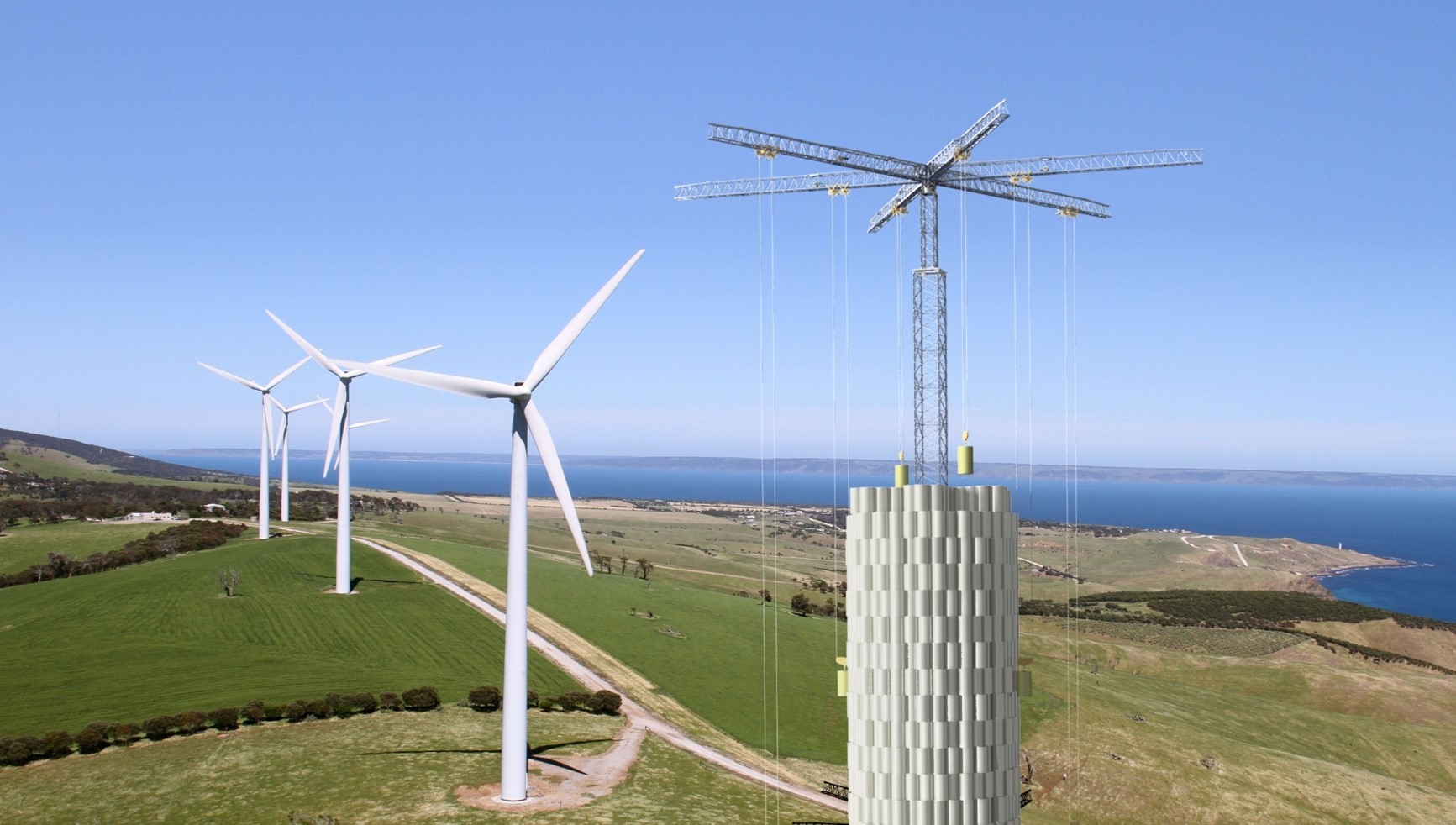Description

Disclaimer: Copyright infringement not intended.
Context
Energy Vault, a company backed by SoftBank Group and Saudi Aramco, is pioneering a solution for renewable energy's intermittent nature by utilizing gravity-based energy storage.
Details
- EVx Platform: Energy Vault's proprietary 'EVx' platform stacks 35-tonne blocks made of a composite material at the top of a structure using surplus electricity from the grid or renewable sources when demand is low.
- Energy Release: When electricity demand increases, the blocks are lowered one by one, releasing kinetic energy that generates electricity, which can be fed back into the grid.
- Solution to Intermittency: This innovative energy storage approach addresses one of the challenges of renewable energy generation – the ability to store excess energy when it's abundant for use during periods of low renewable power generation.
- Deployment in China and US: Energy Vault is currently installing its gravity-based energy storage solutions in China and the United States.
- Collaboration with Indian Firms: The company is in talks with prominent Indian energy companies, including NTPC Ltd, Tata Power, and ReNew Power, for potential collaborations.
- Pumped Hydro Sites: The Union Power Ministry has surveyed pumped hydro sites, exploring potential locations for energy storage projects.
- Overall Challenge: India is facing challenges in sustaining a significant monthly addition of renewable energy to the grid, emphasizing the need for effective energy storage solutions.

Introduction to Gravity Batteries
- Gravity batteries, also known as gravity-based energy storage systems, are innovative solutions that harness gravitational potential energy to store and release electricity.
- These systems have gained attention as a promising approach to address the challenges of renewable energy intermittency and grid stabilization.
Understanding Gravity-Based Energy Storage
Gravity batteries rely on the simple yet effective principle of raising and lowering heavy objects to store and release energy. The key components of a gravity battery system typically include:
- Heavy Mass: Large, heavy objects, such as concrete blocks or containers filled with materials, are elevated to a certain height using surplus electricity or energy from renewable sources during periods of excess power generation.
- Cranes or Elevators: Mechanical systems, like cranes or elevators, are employed to lift the heavy mass to the desired height. The potential energy gained during this process is stored until needed.
- Energy Release Mechanism: When electricity demand rises or during periods of low renewable energy generation, the heavy mass is gradually lowered, converting potential energy back into electricity through a generator or other energy conversion technology.
Working Principles of Gravity Batteries
The operation of gravity batteries can be summarized in the following steps:
- Energy Charging: Excess electricity, often from renewable sources like wind or solar, is used to raise the heavy mass to a predetermined height.
- Energy Storage: The potential energy stored in the elevated mass remains available until it needs to be discharged.
- Energy Discharge: When there is a demand for electricity or a need for grid stabilization, the heavy mass is lowered gradually, converting potential energy into electrical energy.
- Electricity Supply: The generated electricity is then supplied to the grid or used for specific applications.
Advantages of Gravity Batteries
Gravity batteries offer several advantages in the realm of energy storage:
- High Efficiency: These systems have relatively high round-trip efficiency, meaning they can convert stored potential energy back into electricity with minimal losses.
- Long-Duration Storage: Gravity batteries are well-suited for long-duration energy storage, addressing the intermittency issues associated with renewable energy sources.
- Minimal Environmental Impact: They have a small environmental footprint, particularly when compared to certain chemical battery technologies.
- Scalability: Gravity batteries can be scaled up to match the energy storage requirements of diverse applications, from residential to utility-scale.
- Reliability: These systems are known for their durability and reliability, with minimal degradation over time.
Applications of Gravity Batteries
Gravity batteries have the potential to revolutionize energy storage across various sectors:
- Grid Stabilization: They can be deployed to balance electricity supply and demand, reducing the need for fossil fuel-based peaker plants.
- Renewable Energy Integration: Gravity batteries help integrate renewable energy sources by storing excess energy and releasing it when needed.
- Microgrids: They are suitable for microgrid applications, especially in remote or off-grid areas.
- Emergency Backup: Gravity batteries can provide reliable backup power during grid outages and emergencies.
- Industrial and Commercial Use: Large-scale gravity batteries can support energy-intensive industries and commercial facilities.
Challenges and Future Developments
- While gravity batteries offer significant potential, there are challenges to overcome, such as the need for suitable infrastructure and the efficiency of energy conversion.
- Ongoing research and innovation aim to improve the scalability, cost-effectiveness, and energy density of these systems, making them even more competitive in the energy storage market.

Conclusion
Gravity batteries represent an exciting frontier in sustainable energy storage technology. With their ability to store large amounts of energy for extended periods and their minimal environmental impact, they have the potential to play a vital role in the transition to a cleaner and more resilient energy future. As research and development efforts continue, gravity batteries may become a cornerstone of the renewable energy landscape, ensuring a stable and sustainable energy supply for generations to come.
|
PRACTICE QUESTION
Q. Discuss the concept and working principles of gravity batteries as innovative energy storage solutions. (150 Words)
|
Array
(
[0] => daily-current-affairs/how-gravity-may-solve-green-powers-problem
[1] => daily-current-affairs
[2] => how-gravity-may-solve-green-powers-problem
)











